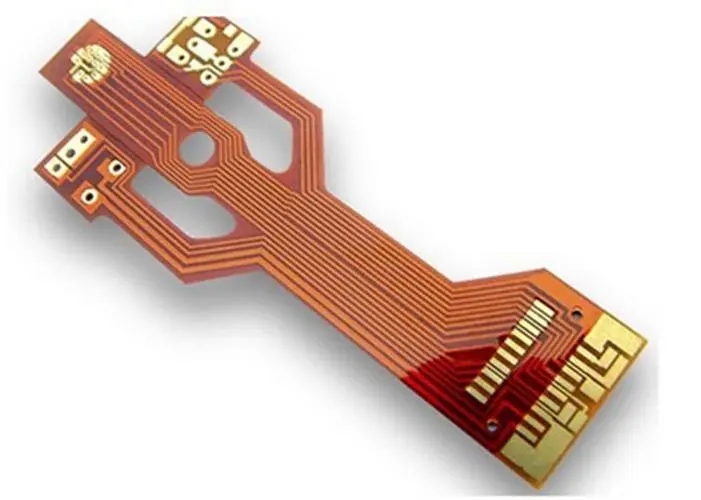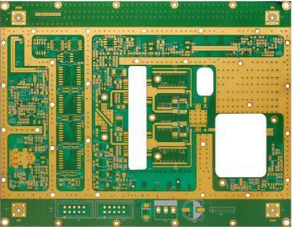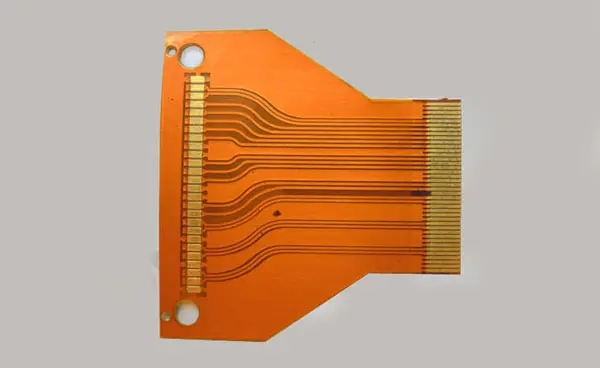
Flexible circuit board: explanation of fpc surface electroplating
Circuit board manufacturing, circuit board design and PCBA processing manufacturers explain flexible circuit boards: fpc surface electroplating
1. Flexible circuit board electroplating
(1) Before FPC electroplating, the exposed copper conductor surface of the flexible circuit board after the coating process may be contaminated by adhesive or ink, as well as oxidation and discoloration caused by the high-temperature process. To obtain a tight coating with good adhesion, the contamination and oxide layer on the conductor surface must be removed to make the conductor surface clean.
However, some of these pollutions are firmly bound to the copper conductor and cannot be completely removed with a weak cleaning agent. Therefore, most of them are treated with alkaline abrasives and polishing brushes with a certain strength. Most of the coating adhesives are epoxy resins with poor alkali resistance, which will lead to a decline in the bonding strength. Although it is not obvious, the plating solution may infiltrate from the edge of the coating in the FPC electroplating process, In severe cases, the covering layer will peel off. In the final welding, the solder drill gets under the coating.

It can be said that the pre-treatment cleaning process will have a significant impact on the basic characteristics of the flexible circuit board, and the treatment conditions must be given full attention.
(2) Thickness of FPC electroplating When electroplating, the deposition speed of the plated metal is directly related to the electric field strength, which changes with the shape of the line graph and the position of the electrode. Generally, the thinner the wire width is, the sharper the terminal at the terminal is, the closer the distance to the electrode is, the greater the electric field strength is, and the thicker the coating at this position is.
In the applications related to flexible circuit boards, there is a great difference in the width of many wires in the same circuit, which is more likely to cause uneven coating thickness. To prevent this, a shunt cathode pattern can be attached around the circuit to absorb the uneven current distributed on the electroplating pattern, and maximize the uniformity of coating thickness on all parts. Therefore, efforts must be made on the electrode structure. A compromise scheme is proposed here. The standard for the parts with high requirements for uniformity of coating thickness is strict, and the standard for other parts is relatively relaxed, such as the standard for molten solder plating, gold plating layer for metal wire overlap (welding), etc., is higher, while the requirement for coating thickness of lead tin for general anti-corrosion is relatively relaxed.
(3) The smears and dirt of FPC electroplating are just in the plating state. Especially, there is no problem with the appearance. However, some surfaces appear smears, dirt, discoloration and other phenomena shortly after. In particular, no abnormality is found during the factory inspection. However, when the user conducts acceptance inspection, there is a problem with the appearance. This is due to insufficient drifting, and there is residual plating solution on the coating surface, which is caused by chemical reaction slowly after a period of time.
Especially for flexible circuit boards, due to their softness and unevenness, various solutions are easy to accumulate in their recesses, which will react and change color in this part. In order to prevent this situation, not only full drifting but also full drying treatment should be carried out. It can be confirmed whether the drifting is sufficient through high temperature thermal aging test.
2. Flexible circuit board electroless plating
When the line conductor to be electroplated is isolated and cannot be used as an electrode, it can only be electroless plated. Generally, the plating solution used for electroless plating has strong chemical effect, and the electroless gold plating process is a typical example. The electroless gold plating solution is an alkaline aqueous solution with very high pH value. When using this electroplating process, it is easy for the plating solution to drill under the coating, especially if the quality management of the coating laminating process is not strict and the bonding strength is low, this problem is more likely to occur.
Due to the characteristics of the plating solution, the phenomenon of the plating solution drilling under the coating is more likely to occur in the chemical plating of displacement reaction. It is difficult to obtain ideal electroplating conditions with this process.
3. Flexible circuit board hot air leveling
Hot air leveling was originally developed for coating lead and tin on rigid PCB. Due to its simplicity, it is also applied to flexible PCB. Hot air leveling is to directly and vertically immerse the plate into the molten lead tin bath, and blow away the excess solder with hot air. This condition is very harsh for the flexible circuit board. If the flexible circuit board cannot be immersed in the solder without taking any measures, the flexible circuit board must be clamped between the wire mesh made of titanium steel, and then immersed in the molten solder. Of course, the surface of the flexible circuit board must be cleaned and coated with flux in advance.
Due to the harsh process conditions of hot air leveling, it is easy for solder to drill from the end of the coating to the bottom of the coating, especially when the bonding strength between the coating and the copper foil surface is low, this phenomenon is more likely to occur frequently. As polyimide film is easy to absorb moisture, when hot air leveling process is adopted, moisture absorbed will cause blistering or even peeling of the coating due to rapid heating and evaporation, so drying treatment and moisture-proof management must be carried out before FPC hot air leveling.
Large components shall be provided with positioning posts or holes, especially I/O interfaces, microphones, battery interfaces, microswitches, headphone interfaces, motors, etc. Circuit board manufacturing, circuit board design, PCBA processing manufacturers will explain flexible circuit boards: fpc surface electroplating.







